Eggshells are more than just kitchen waste. Often tossed aside without a second thought, they actually hold incredible value for gardeners. Packed with calcium and other minerals, eggshells can enrich soil, deter pests, and support plant health when used thoughtfully. Reusing eggshells is a sustainable way to reduce household waste and improve the condition of your garden, all without spending extra money.
The key is preparation and consistency. Eggshells need to be cleaned, dried, and sometimes crushed or powdered depending on their intended use. Once you incorporate them into your gardening routine, you may find them as essential as compost or mulch. Here are five smart ways to reuse eggshells effectively in your garden.
Enrich Soil with Crushed Eggshells
One of the most common and beneficial uses for eggshells in the garden is as a soil amendment. Eggshells are rich in calcium carbonate, a crucial nutrient that helps plants build strong cell walls. Calcium-deficient soil can lead to problems like blossom-end rot in tomatoes and peppers, where the fruit develops dark, sunken spots due to the lack of calcium transport during development.
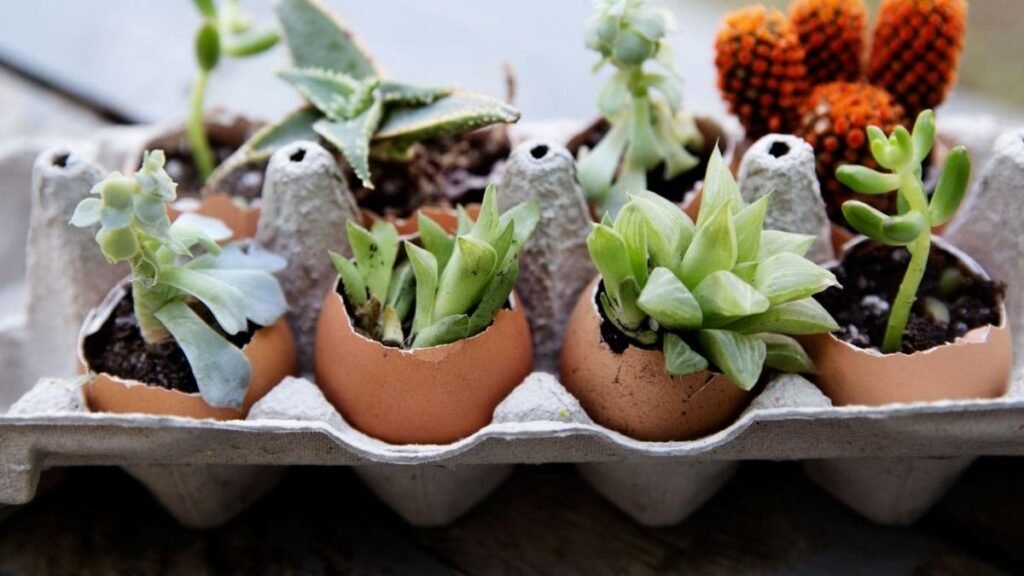
To use eggshells for soil enrichment, rinse them thoroughly after use to remove any egg residue. Allow them to dry completely either in the sun or in a low-temperature oven. Once dry, crush the shells using your hands, a mortar and pestle, or a food processor. Scatter the crushed shells directly onto the soil and work them in lightly around your plants. Over time, the shells will break down and release calcium and trace minerals into the soil, helping improve its structure and nutrient content.
Use Eggshells as a Natural Pest Deterrent
Eggshells also serve as a natural pest barrier, particularly against soft-bodied insects like slugs and snails. These pests avoid crawling over sharp surfaces, and crushed eggshells create a physical boundary that can discourage them from reaching your plants. This method offers a non-toxic alternative to chemical pesticides, making it safe for children, pets, and beneficial insects.
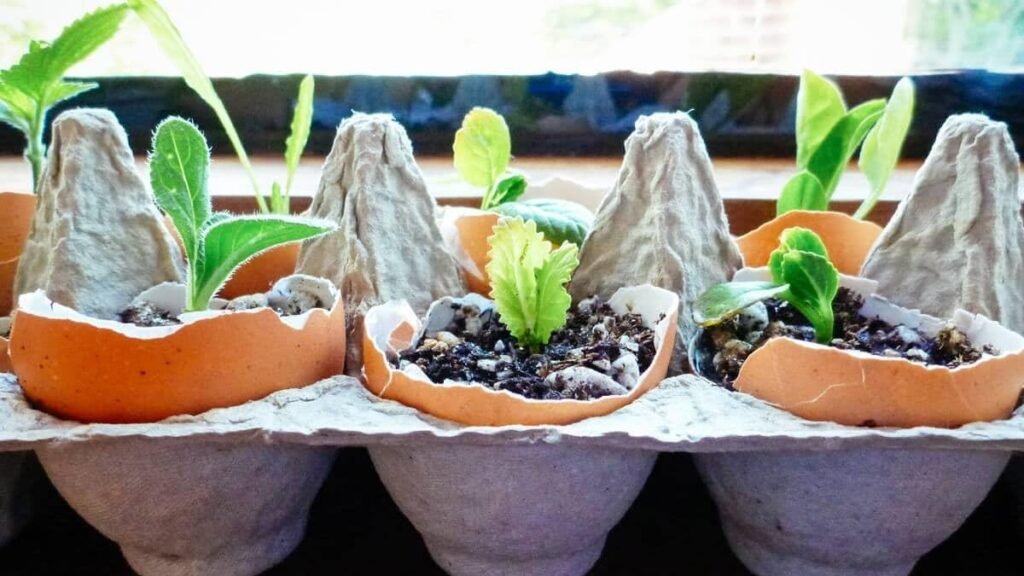
To use eggshells for pest control, crush them into coarse pieces not too fine, as you want the edges to remain sharp. Create a protective ring around the base of vulnerable plants such as lettuce, hostas, or strawberries. While this method isn’t foolproof, it can significantly reduce slug activity, especially when used in combination with other organic gardening practices like watering early in the day and removing mulch that shelters pests.
Start Seedlings in Eggshell Halves
Another creative and sustainable way to reuse eggshells is by turning them into biodegradable seed-starting pots. Eggshell halves are just the right size to cradle young seedlings and can be planted directly into the soil when the time comes. As they decompose, they add nutrients directly to the root zone of your growing plants.
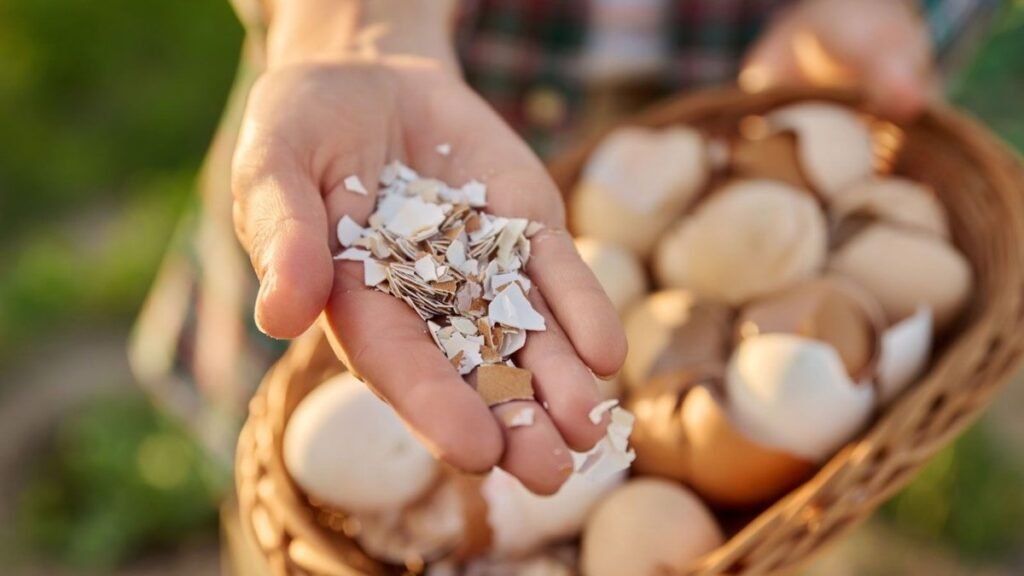
To start seedlings in eggshells, carefully crack the eggs near the top and remove the contents. Rinse the shells thoroughly and poke a small drainage hole in the bottom of each with a needle or pin. Fill the shell with a light potting mix and sow one or two seeds per shell. Place them in an egg carton for support and keep them in a warm, sunny spot. When seedlings are ready to transplant, gently crush the shell just enough to allow roots to escape and plant the entire thing in the soil.
Add Eggshells to Your Compost Pile
Eggshells are an excellent addition to compost. While they don’t break down as quickly as other compostable materials, they contribute valuable minerals to the finished compost, especially calcium. Including eggshells in your compost helps ensure a more balanced nutrient profile, benefiting all your garden plants when the compost is later applied.
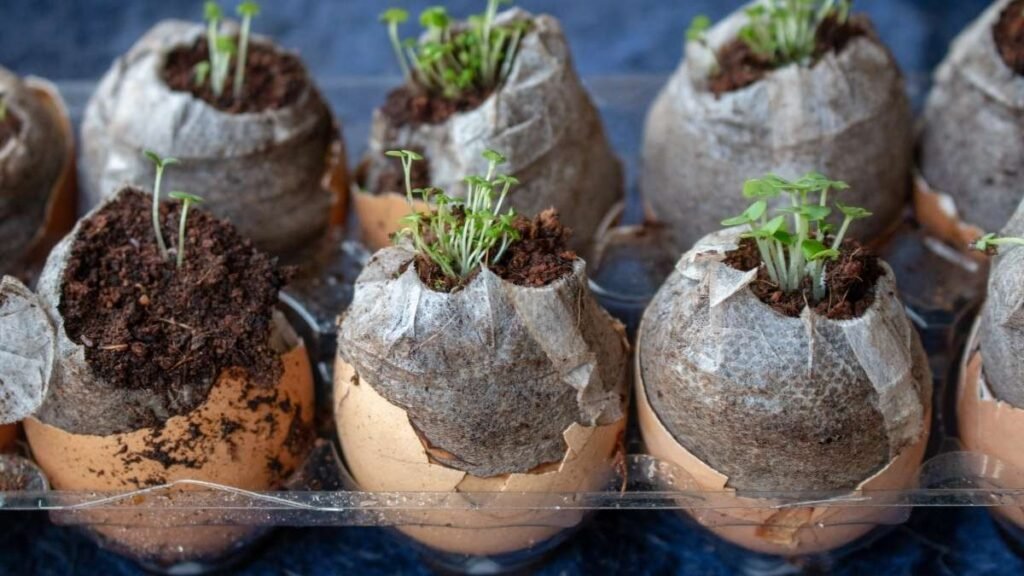
To prepare eggshells for composting, rinse and dry them to prevent attracting pests or causing odors. Crushing them before adding them to the pile increases the surface area, helping them decompose more efficiently. Over time, even in their whole form, eggshells will break down and become part of the rich organic matter that supports soil health.
If you’re concerned about how long they take to break down, you can dry and grind them into a fine powder before adding them to the compost. This speeds up the process and ensures a more even distribution of calcium throughout your compost mixture.
Make Eggshell Tea for a Calcium Boost
For gardeners who want to deliver nutrients directly to plants in a more immediate form, eggshell tea offers a quick and effective option. Eggshell tea is a simple homemade solution that infuses water with calcium and other trace minerals from the shells. It’s particularly useful for correcting minor calcium deficiencies in vegetables like tomatoes, peppers, and eggplants.
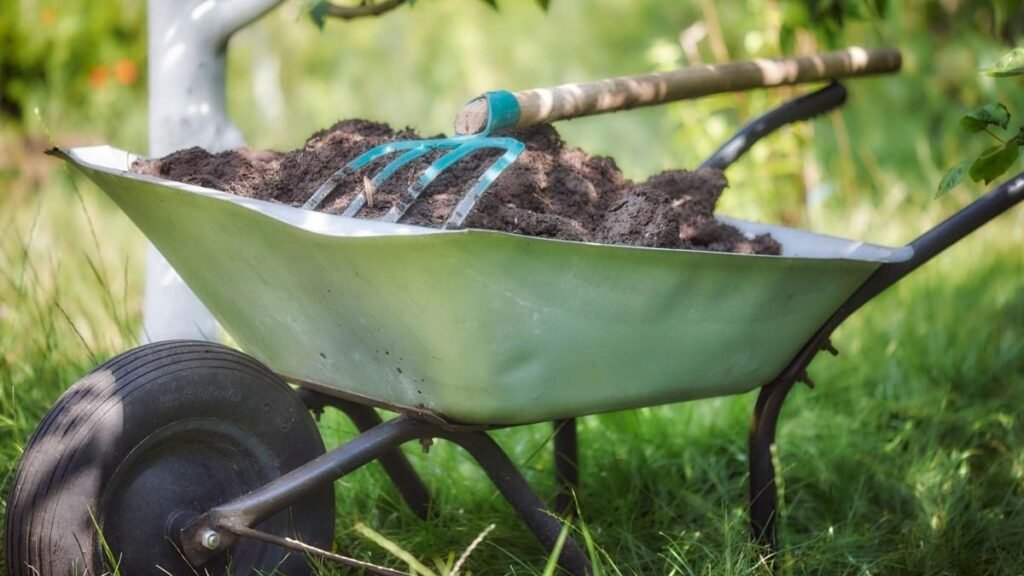
To make eggshell tea, rinse and crush several eggshells and place them in a pot with water. Bring the water to a boil, then let it simmer for 10 to 15 minutes. Allow the mixture to cool completely, then strain out the shells and pour the liquid around the base of your plants. Repeat weekly during the growing season for best results.
Unlike chemical fertilizers, eggshell tea is gentle and unlikely to burn your plants. It’s a safe and eco-friendly way to give your garden a nutrient boost, especially during key growth phases like flowering and fruiting.
Conclusion
Eggshells are a humble yet powerful ally in the garden. Rather than tossing them in the trash, you can put them to work in a variety of practical and sustainable ways. Whether enriching the soil, deterring pests, starting seedlings, enhancing compost, or making nutrient-rich tea, eggshells offer versatility and value that align beautifully with eco-conscious gardening.
The process is simple: rinse, dry, crush, and apply. With regular use, you’ll start to notice healthier soil, stronger plants, and fewer pests all from something you once considered waste. Gardening is often about small, consistent efforts, and reusing eggshells is one of those tiny habits that can yield great rewards.
If you’re looking for more natural gardening tips or want help building a zero-waste garden plan, I’d be happy to guide you further. Let your kitchen and garden work together in harmony starting with your next breakfast.

